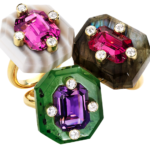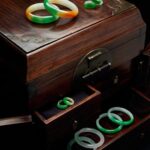For centuries, natural diamonds have been coveted for their beauty, rarity, durability, and symbolic significance. The emergence of lab-grown diamonds has prompted a reevaluation of the traditional diamond market. However, faced with the enduring allure of natural diamonds with their rich history, how will the market landscape for lab-grown diamonds evolve in the future? Let’s explore what industry insiders are saying.
Each natural diamond is a miracle of nature, formed over billions of years. They reach the Earth’s surface through rare volcanic eruptions, creating kimberlite pipes that contain diamonds, which are then discovered by humans. The high value of natural diamonds stems from their extreme scarcity. Only a small fraction of kimberlite contains mineable diamonds.
Extreme temperatures and pressures cause carbon atoms to form symmetrical crystal structures that refract light intensely, emitting a captivating brilliance. Their high hardness also gives natural diamonds excellent wear resistance, allowing them to maintain their luster and integrity over time, preserving their beauty indefinitely.
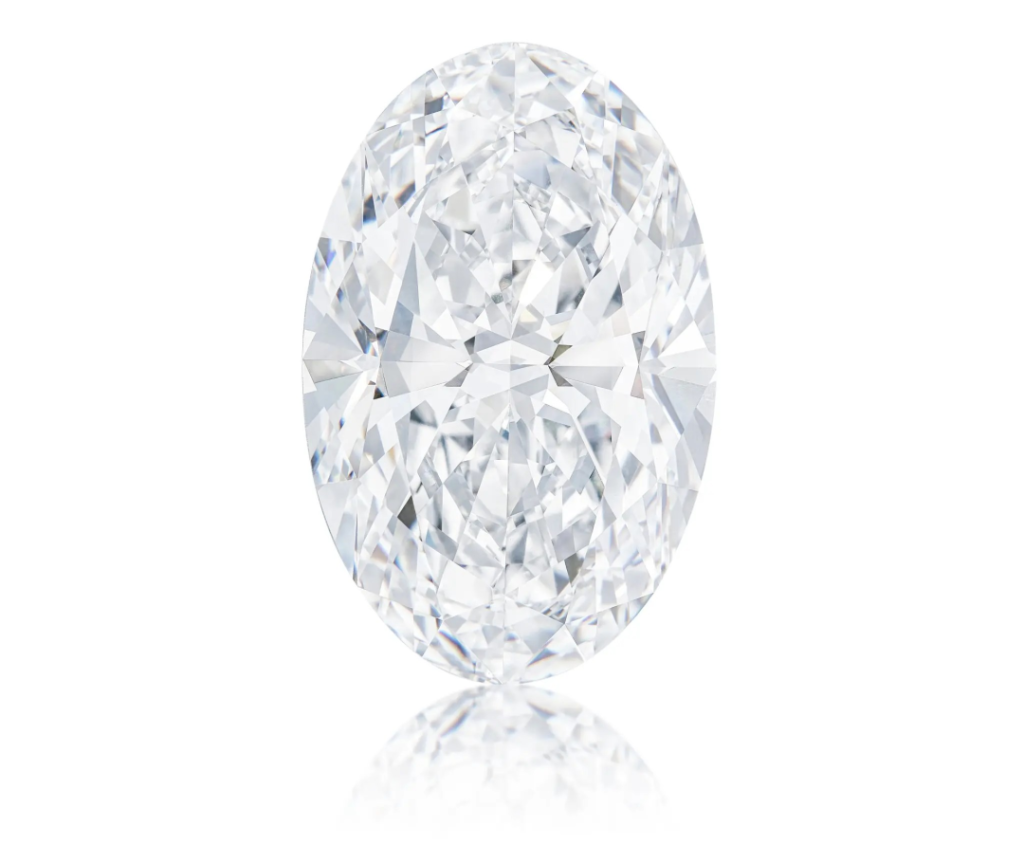
Fortune Five Unmounted Diamond
55.55-carat D color IF oval diamond
Lab-grown diamonds, a product of human ingenuity and advanced technology, are crystals cultivated in laboratories by precisely controlling various conditions to simulate the natural diamond formation process. The appearance, chemical properties, and physical characteristics of lab-grown diamonds are almost indistinguishable from natural diamonds.
In some aspects, lab-grown diamonds even surpass their natural counterparts. For instance, in laboratory settings, we can adjust cultivation conditions to create diamonds of different sizes and colors. This customizability allows lab-grown diamonds to more easily meet diverse individual preferences.

The advantage of natural diamonds lies in their unique cultural value and emotional significance. Diamonds have long been viewed as a symbol of love, embodying people’s beautiful aspirations for romance. As rare, non-renewable resources, natural diamonds have also become sought-after objects for investors and collectors.
On the other hand, the controllable production process and ability to mass-produce lab-grown diamonds significantly reduce their cost compared to natural diamonds, giving them a clear price advantage.
What are the differences between lab-grown and natural diamonds?
Every natural diamond possesses unique textures and inclusions that current lab-grown diamond technology cannot replicate.
While difficult to distinguish with the naked eye, natural diamonds, when viewed under a microscope, reveal transparent colored or colorless mineral inclusions. Lab-grown diamonds, however, typically contain opaque inclusions that appear golden, silver, or black under reflected light, often consisting of dust and metal particles.
Furthermore, laboratory-grown diamonds allow for control over impurities and color, resulting in more vivid hues compared to natural colored diamonds.
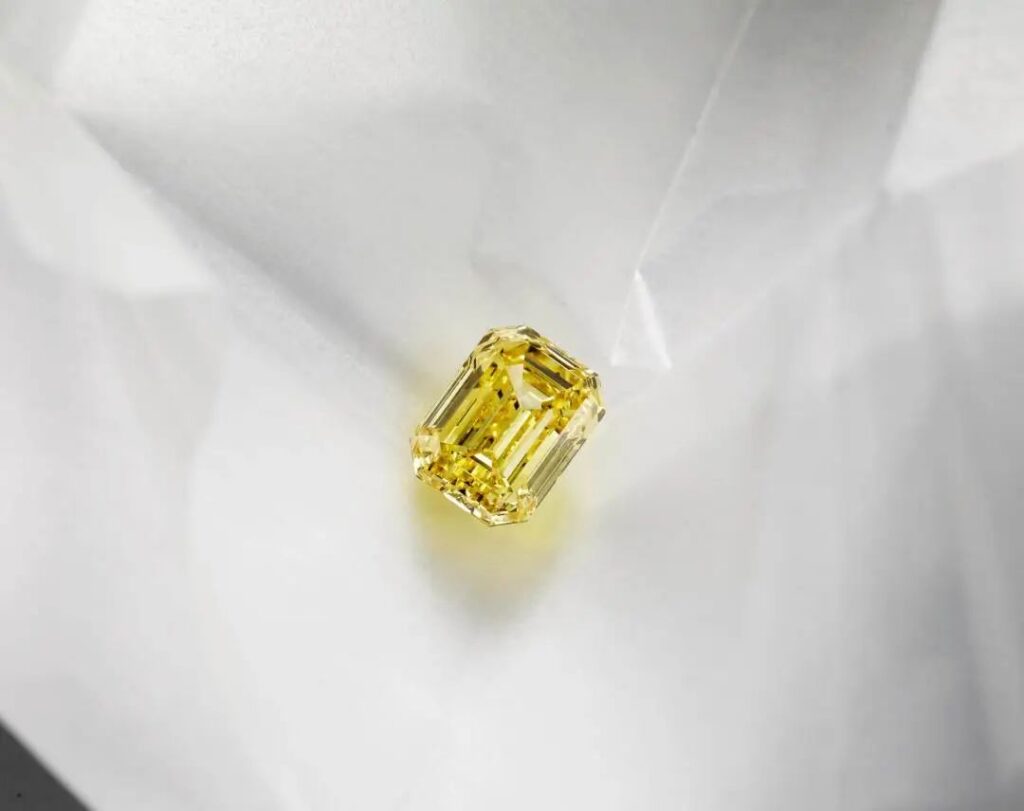
Natural yellow diamond
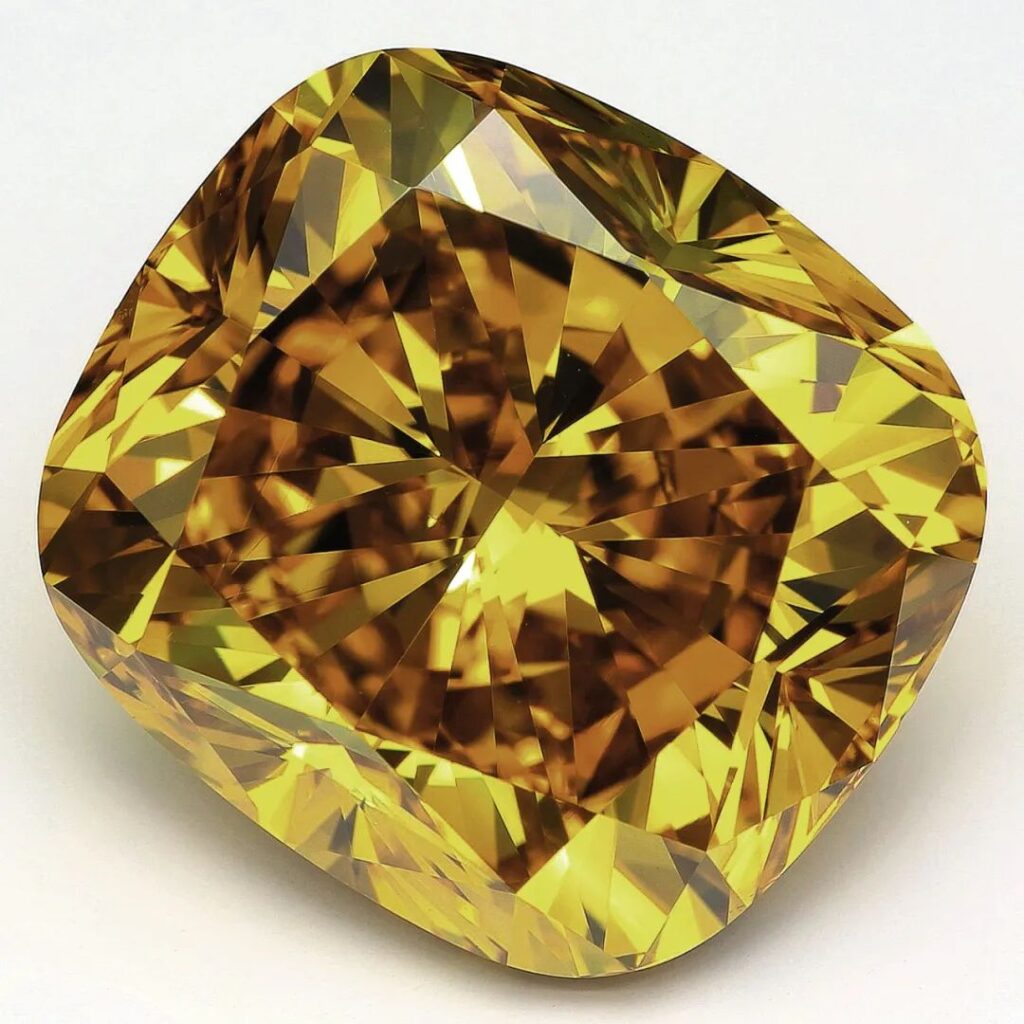
Color: Fancy Vivid Yellowish Orange
As lab-grown diamonds have gradually entered the market, they have had a significant impact on the traditional natural diamond market. We often see discussions about lab-grown versus natural diamonds on various social media platforms. This is not only a core point of contention in the diamond industry but also a concern for collectors.
In the early stages of lab-grown diamonds entering the market, there was a clear divide between them and natural diamonds, with each operating independently. Major diamond trading centers worldwide, including India, Israel, and Belgium, prohibited lab-grown diamonds from entering their trading floors.
With continuous technological advancements and the increasing standardization of the lab-grown diamond industry, authoritative gemological institutions such as the Gemological Institute of America (GIA) and the International Gemological Institute (IGI) have begun to issue certification for lab-grown diamonds.
Simultaneously, as consumer awareness deepens, the lab-grown diamond market has shown enormous potential. International brands like De Beers Group have launched lab-grown diamond brands such as Lightbox, while Swarovski has introduced its Swarovski Created Diamonds collection.
As the largest producer of lab-grown diamonds, China’s domestic market has seen the emergence of many lab-grown diamond brands, such as Lusant, launched by Yuyuan Jewelry and Fashion Group.
According to data released by Tenoris, lab-grown diamonds now account for approximately 50% of the U.S. market share.
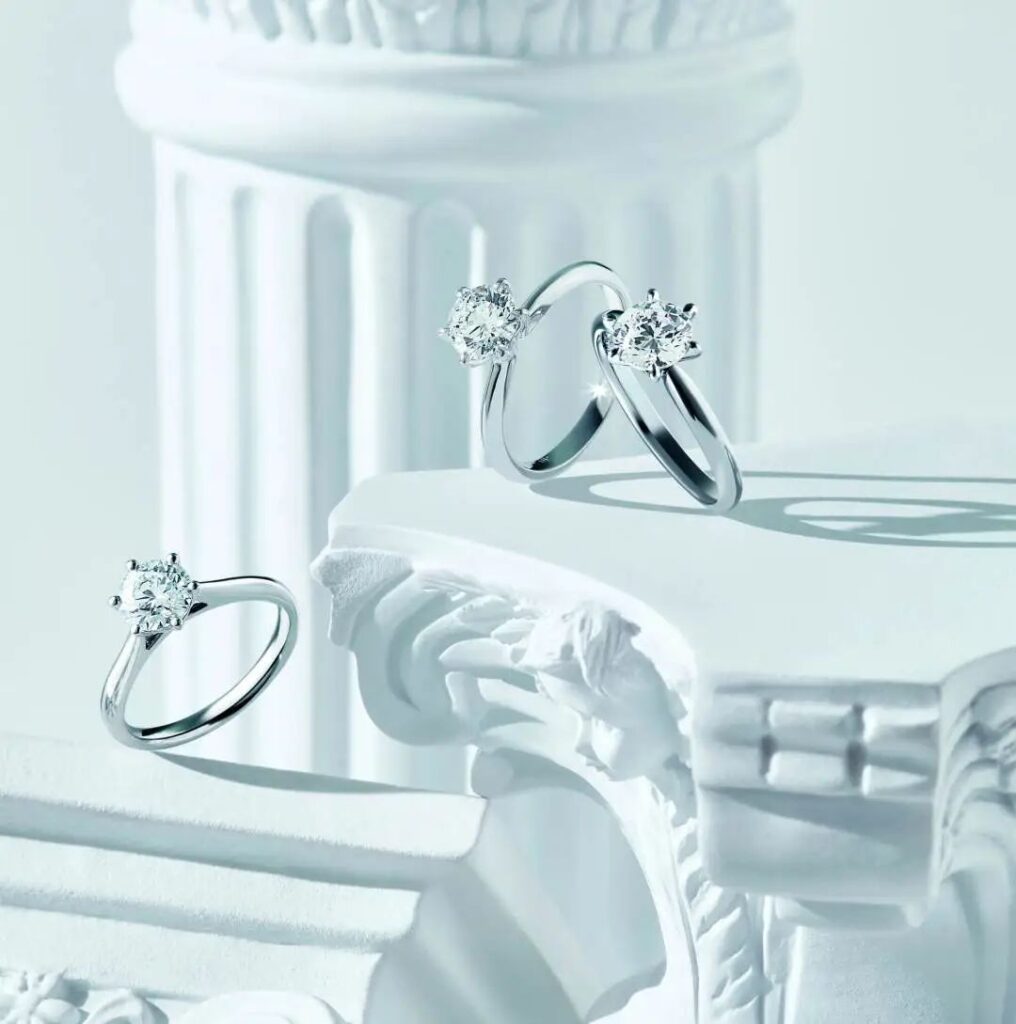
Classic diamond ring
Although natural diamond prices have fluctuated in recent years, they generally remain at historically high levels despite short-term volatility. Currently, prices for large carat, high-quality natural diamonds are relatively stable, while rare colored diamonds continue to appreciate. In high-end jewelry, collectibles, and auction markets, natural diamonds maintain their unshakeable position.
However, with continuous improvements in technology and increasing global production capacity, lab-grown diamonds have entered into fierce price competition. The price of lab-grown diamonds has dropped from 80% of natural diamonds to below 10%, allowing more people the opportunity to purchase desirable diamond jewelry at a lower cost.
How to choose lab-grown diamonds?
An authoritative certificate serves as a diamond’s “identity card.” When purchasing lab-grown diamond jewelry, it’s advisable to choose pieces with domestic or international certificates. Certificates issued by reputable gemological institutions will clearly state “Laboratory Grown” to distinguish lab-grown diamonds from natural ones. These certificates accurately reflect the diamond’s true quality and value, providing strong purchasing assurance.
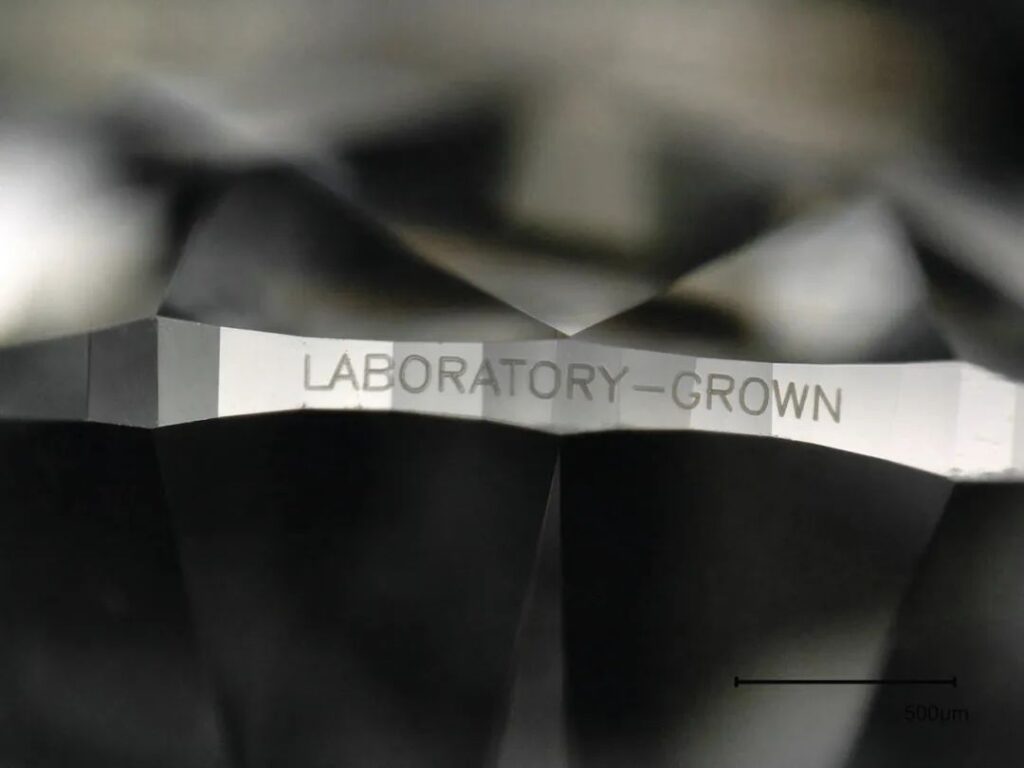
What do experts say?
In recent years, the popularity of lab-grown diamonds has remained high, becoming a new force in the jewelry industry. The International Gemological Institute (IGI) is the world’s first ISO-certified lab-grown diamond grading institute. As an independent third-party grading institution, IGI provides authoritative and professional grading reports for each diamond. Swarovski is one of the first brands to introduce lab-grown diamond products in the Chinese market.
How will lab-grown diamonds develop in the future? Let’s hear from industry experts, including grading institutions, brands, jewelry academies, and jewelry designers.

Yong’en Shen, Managing Director of China Region
Q1: What are the similarities and differences in grading standards between lab-grown and natural diamonds?
Both natural and lab-grown diamonds are essentially pure carbon crystals. Although there are some microscopic differences, their chemical composition and physical structure are nearly identical. This makes it difficult to distinguish between lab-grown and natural diamonds with the naked eye; only through professional laboratory testing can their true identity be determined.
When examining lab-grown diamonds, scientists typically consider factors such as inclusions, color, absorption spectrum, refraction, luminescence characteristics, and crystal form. In terms of grading standards, lab-grown diamonds are usually evaluated using the same “4C” criteria as natural diamonds.
Colors range from D (colorless) to Z (noticeable color), clarity from FL (flawless) to I3 (obvious inclusions), while cut is evaluated based on factors such as symmetry, proportions, and light reflection.
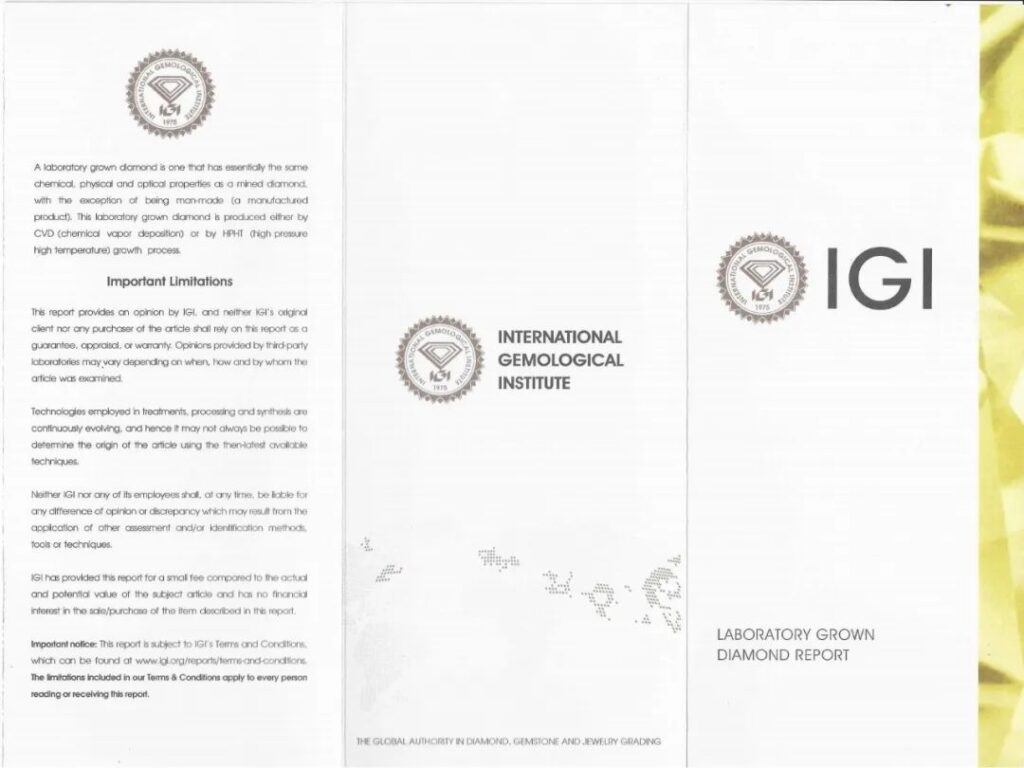
Lab-grown diamond grading certificate
Q2: For the average person, how can one understand a lab-grown diamond grading certificate, and what are the key points to look for?
The International Gemological Institute (IGI) has designed a specific cover for lab-grown diamond grading reports. Lab-grown diamonds also have a laser inscription on the girdle with the certificate number and “Lab Grown” marking. From the grading report, we can view various evaluation details of the diamond. The most important aspect is the diamond’s “4C” grading, which provides a more intuitive understanding of the diamond’s quality and value.
Additionally, the certificate includes information such as the date, fluorescence (the diamond’s reaction under ultraviolet light), and the diamond’s growth method. Some certificates also include a detailed diagram of the diamond’s internal flaws to supplement the clarity grade. Each certificate has a unique number to verify its authenticity and related information.
Of course, if you’re still unsure about the contents of a diamond certificate, it’s advisable to seek help from a professional gemologist or jewelry appraiser.
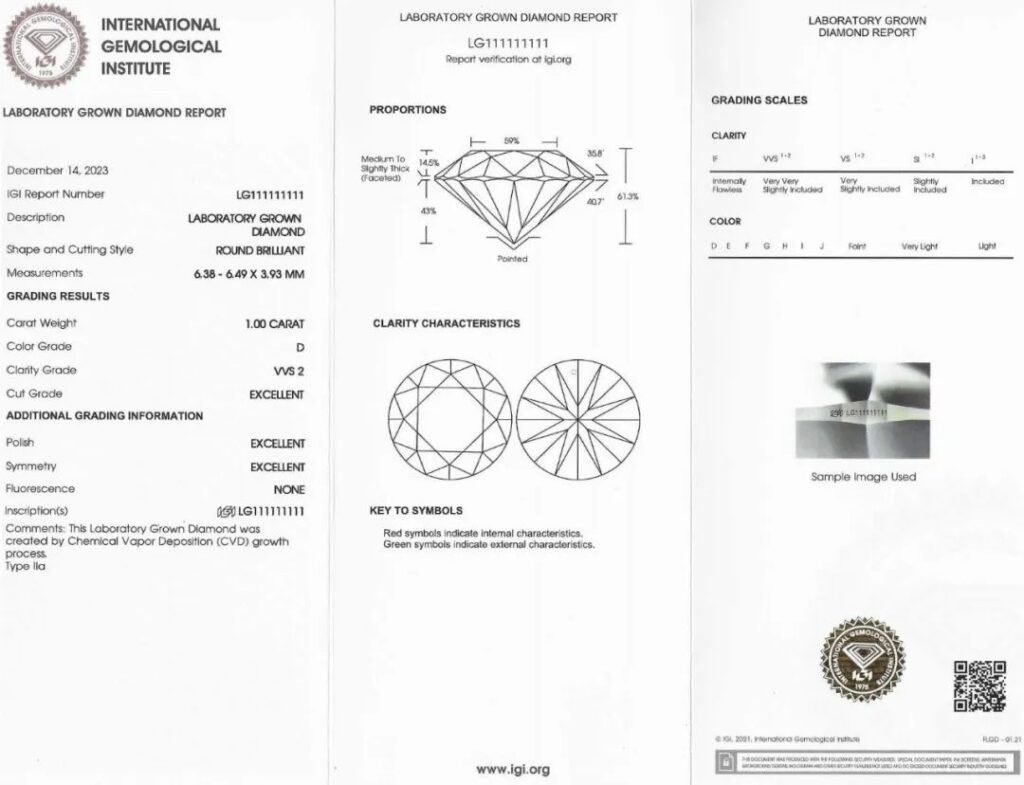
Lab-grown diamond grading certificate
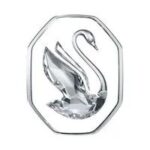
Brand representative
Q1: As a leader in the crystal industry, why did you turn your attention to lab-grown diamonds? What factors were considered when launching related products?
Introducing lab-grown diamond products was a natural development for us and brought new opportunities for our business strategy. Launching a lab-grown diamond series aligns perfectly with Swarovski’s brand asset model and helps fulfill our brand mission to “make the world shine brighter.” While inspiring creativity in design, we are also gradually expanding the boundaries of fine jewelry.
When launching the Swarovski Created Diamonds series, we employed innovative techniques to simulate natural environments and grow diamonds in the laboratory. Each diamond is strictly graded according to the “4C” diamond standards to ensure quality.
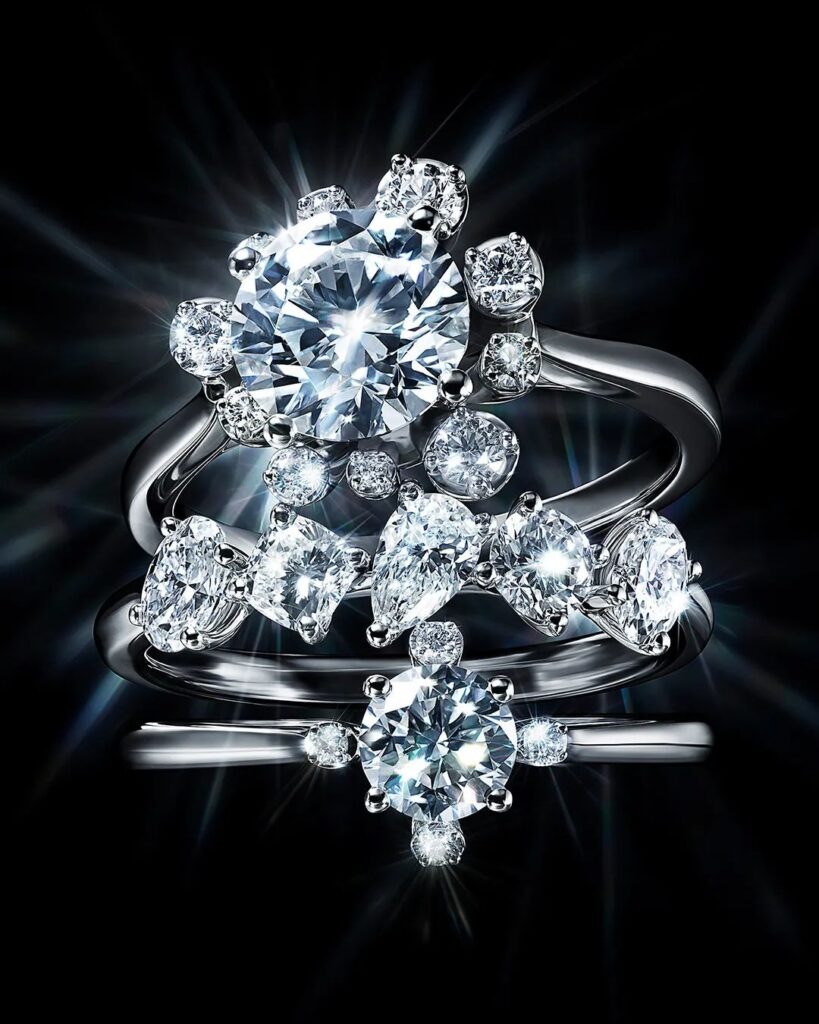
Swarovski Created Diamonds series ring
Q2: What is the current consumer feedback on lab-grown diamond products? What predictions do you have for their development in the Chinese market?
Swarovski Created Diamonds have already achieved success in Western markets, including the United States. As one of the first well-known international brands to introduce lab-grown diamonds in China, Swarovski received positive feedback for their lab-grown diamond pieces in Greater China between March 27 and April 17. With China being a key market for the Swarovski brand, we will continue to increase our investment in launching this series of products.
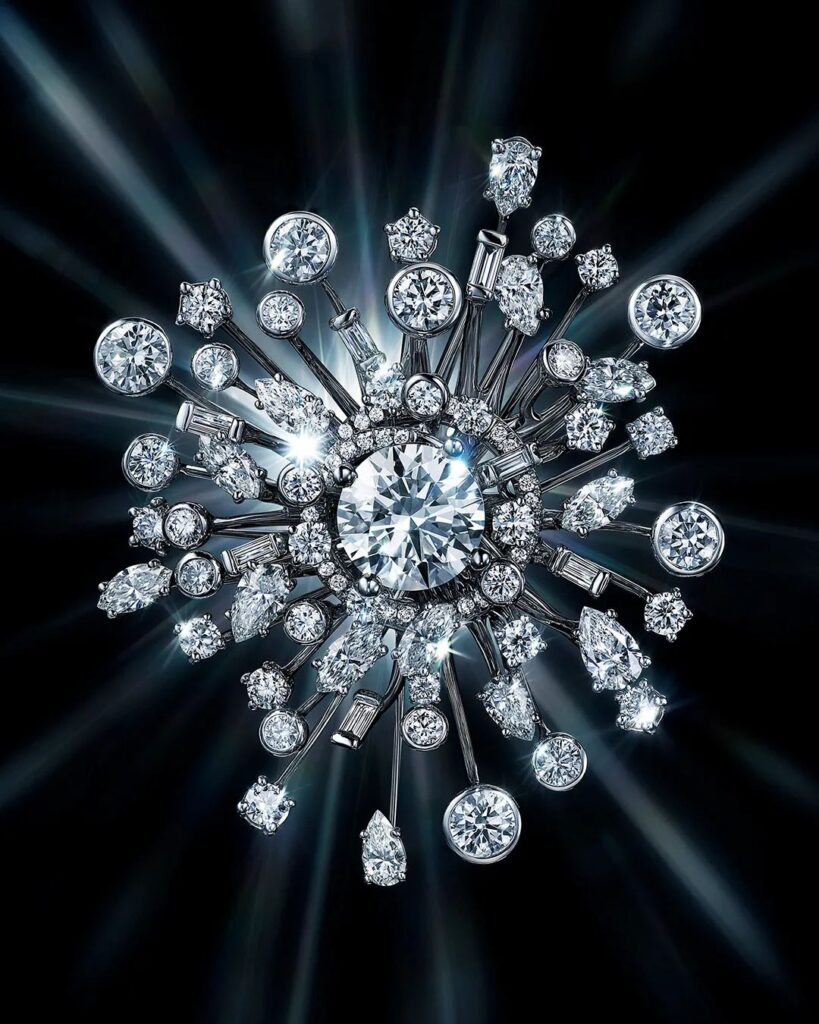
Swarovski Created Diamonds series ring

Dean of School of Gemology, Guo Ying
Q1: Lab-grown diamonds are now popular among young consumers. Do you think there is competition between lab-grown and natural diamonds? As a jewelry expert and scholar, would you recommend purchasing lab-grown diamonds?
Lab-grown diamonds can be considered a “high-quality substitute” for natural diamonds. Their appearance and function are identical to natural diamonds, but they are accelerated in growth in factories or laboratories. In public perception, diamonds represent love, a concept that Western jewelry companies have used to promote diamonds worldwide, emphasizing their eternity. However, both natural and lab-grown diamonds are actually eternal.
Currently, domestic companies producing lab-grown diamonds are gradually increasing their production capacity, with high output and mature technology, which lowers the cost of lab-grown diamonds. Natural diamonds, as a non-renewable resource, can serve as investments and collectibles, maintaining or increasing in value.
Lab-grown diamonds, on the other hand, are primarily used as jewelry, which can increase public acceptance of them. Therefore, from a decorative and price perspective, I would highly recommend purchasing lab-grown diamonds.
Q2: What do you think is the future commercial development trend for lab-grown diamonds?
I believe lab-grown diamonds have a promising future. As technology advances, the production and quality of lab-grown diamonds will further improve, and consumer acceptance will continue to increase. Lab-grown diamonds may not only be used in jewelry but also in clothing or other types of accessories.
The future applications of lab-grown diamonds will emphasize decorative function rather than value attributes. The ability to mass-produce lab-grown diamonds also gives them broad development prospects in industrial and high-tech fields.
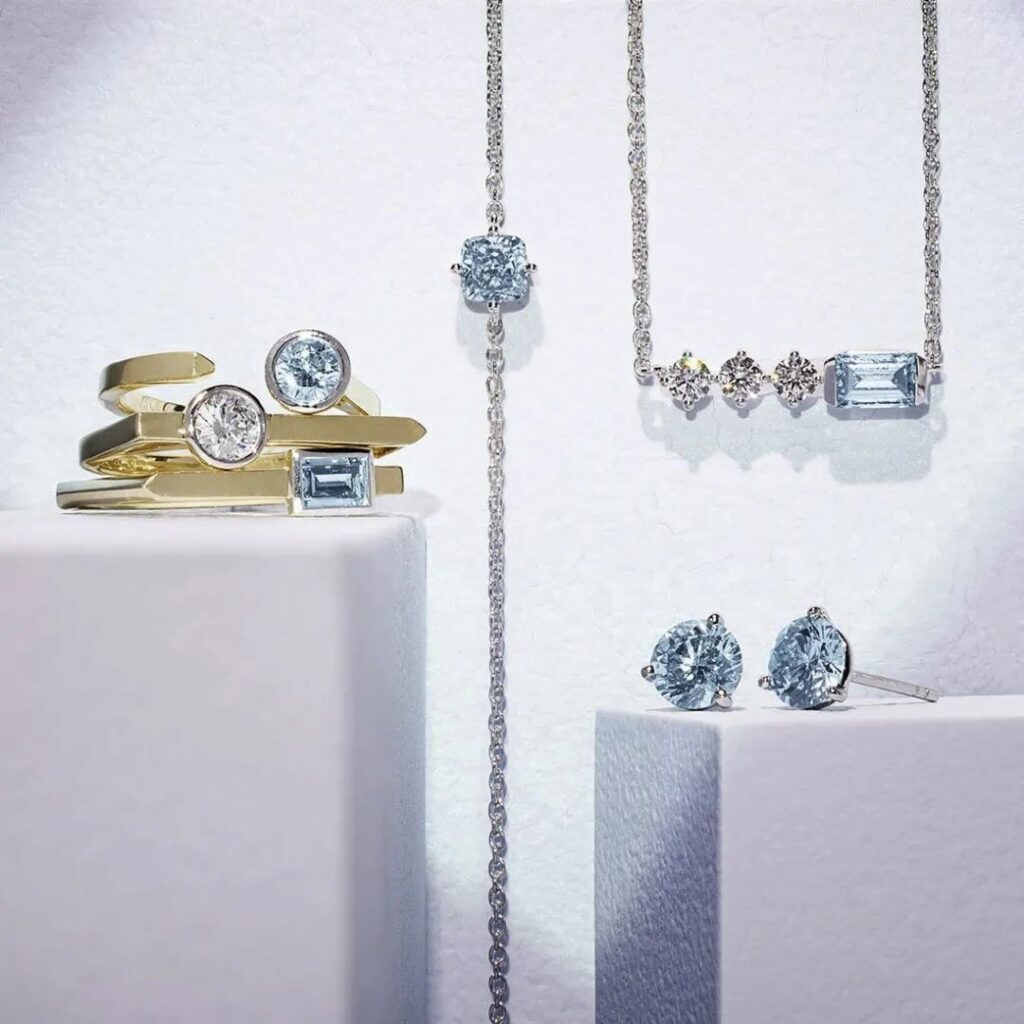
Rings, earrings, necklaces

Founder, Fei Liu
Q1: As a jewelry designer, would you consider using lab-grown diamonds in your product designs?
Whether to use lab-grown diamonds in my work primarily depends on consumer consumption patterns. First, we should acknowledge the emergence of lab-grown diamonds, as they have changed the way jewelry is presented to the public.
However, before discussing this issue, we should clarify the difference between jewelry and accessories. Jewelry is of extremely high value, incorporating the designer’s inspiration, exquisite craftsmanship, and the inherent precious value of materials such as precious metals and gemstones.
Accessories, on the other hand, generally use non-precious materials and focus more on aesthetics. Regardless of how human society’s perception of value changes, the difference between these two will always exist. When I’m creating accessories or a special piece, I might use lab-grown diamonds. However, I wouldn’t use lab-grown diamonds in haute couture pieces or high-end jewelry.
Q2: In your opinion, how does designing with lab-grown diamonds differ from using natural diamonds? How do you recommend pieces with natural diamonds versus lab-grown diamonds to clients?
The emergence of lab-grown diamonds can lower the creative threshold for designers, giving them more room for expression. When facing clients, I first emphasize the materials used in the jewelry. If a piece uses lab-grown diamonds, I inform the consumer about exactly what the material is. If a client comes with the intention of buying jewelry, they definitely won’t buy lab-grown diamonds.
However, if the client likes the style and comes for the design, I believe lab-grown diamonds can satisfy the consumer’s requirements for a piece of jewelry to a great extent.
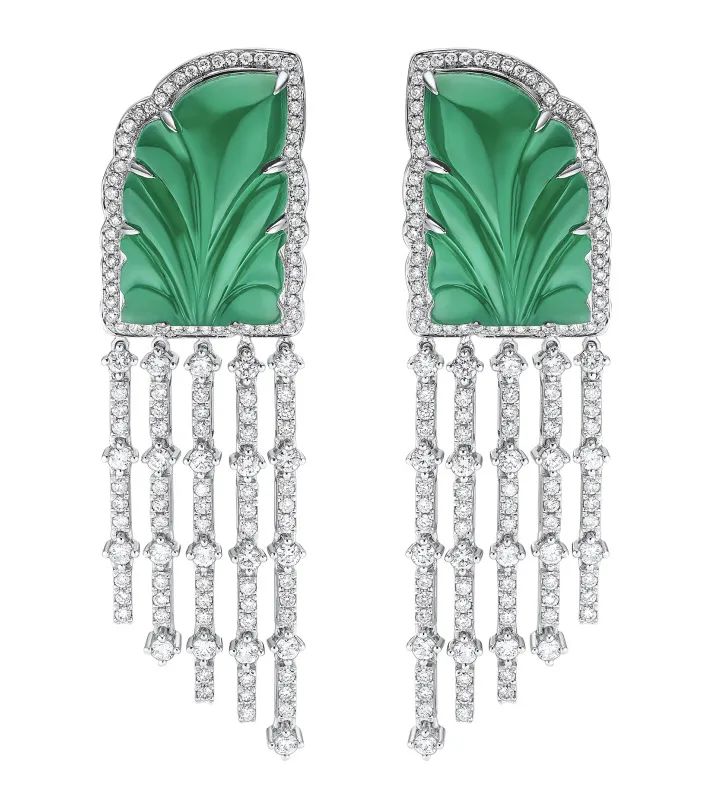
18K white gold, emerald, and diamond earrings
From my experience in the market, American consumers prefer cheaper, flashier jewelry, regardless of whether it’s natural or synthetic. In China, consumers with a certain economic foundation tend to purchase natural diamonds, or after owning natural diamonds, they might buy a few lab-grown diamond designs as accessories.
Young people, on the other hand, focus more on design and aesthetics. Therefore, when interacting with consumers, I need to determine their intentions to better recommend products to them.
Lab-Grown vs Natural Diamonds: The Sparkling Showdown of the Century
Tweet
Further Reading
